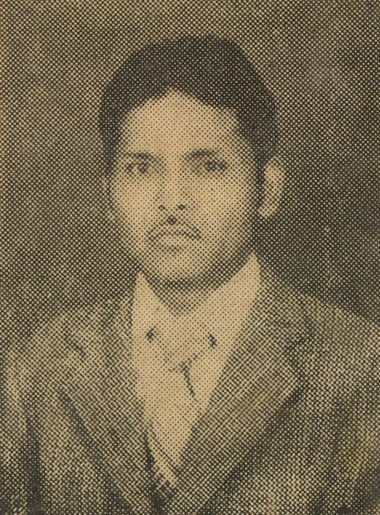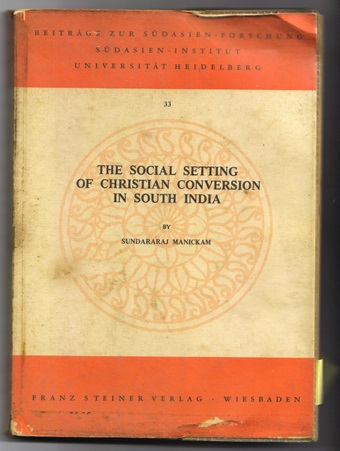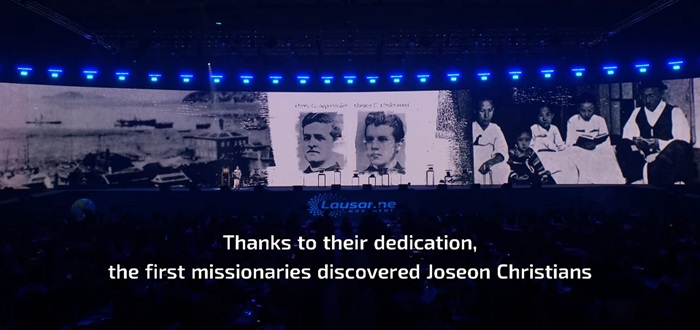
Sundararaj Manickam was a shepherd boy when a missionary asked him if he would like to go to school.
Missionaries have a tarnished reputation in the West – sometimes deserved, often not. They are probably more fondly remembered in Africa, Asia and Latin America.
This truth came home to me several times as I participated in the Fourth Lausanne Congress at Incheon, South Korea at the end of September. More than 5,400 participants were there, from 200 nations.
Several times – at our table during plenary sessions, from the stage and in the hallways – people thanked the missionaries who had given their lives to go to foreign lands to share the gospel.
Shepherd to scholar
I was particularly moved by the story of one man at my own table, who said, “It’s because of Ruth Anstey coming to South Asia as a missionary that I became a missionary in East Africa.”
He was referring to a woman known to villagers as “the white lady with the frock and the bicycle.” Anstey had arrived in his family’s traditional village during the 1940s as a Methodist missionary; she spent 16 years in the area, becoming proficient in the local dialect.
One day, he said, she was making her way through the village’s government primary school when “she saw my father, who was on a palm tree.” He was a shepherd boy, “there on the treetop,” looking down at children in a school. He was not able to attend the school, though often neighbourhood children went to the school for a free meal.

Methodist missionary Ruth Anstey stopped to talk with a shepherd boy.
The boy’s father was a farmer and village head. He had become a Christian, but the family were not well off financially.
Anstey asked, “Who are you, where are you from?” And whether he would like to go to school.
Going with the boy to his house, she asked whether his parents would be willing to send their son to a Christian mission school. His father responded that they had no money for his education, but if she was willing she could take him anywhere she wanted.
Sundararaj Manickam was sent off to a missionary boarding school, where he was “a topper” in all courses. He won a full scholarship to Madras Christian College, where he gained a BA, and Madras Christian University, where he graduated with an MA. Both degrees were in history, and he won the gold medal each time.
When he graduated in 1973, a Bishop in the Church of South India wanted him to go to to the prestigious University of Heidelberg in Germany, which he did, on a full scholarship from the Protestant Church in Germany. He was awarded a DPhil for his thesis, ‘The Social Setting for Christian Conversion in South India.’
After further research in London and France, he moved back to South Asia, where he was a Professor of World History and Church History at a church-based college and a regional university for 35 years. He also served as an exchange faculty member in the United States and Germany.
He wrote a book based on his thesis, and 12 others, including Western Contribution to Social Progress in India, Studies in Missionary History: Reflections on a Culture Contact and Slavery in the Tamil Country: a Historical Overview.
Missionary influence
 Sundararaj’s son is now a missionary in the Horn of Africa, the first of his family to enter that field. He worked with the Ministry of Foreign Affairs in his home country until 2014. He said he first heard the call to missions before that – “but I was not obedient.”
Sundararaj’s son is now a missionary in the Horn of Africa, the first of his family to enter that field. He worked with the Ministry of Foreign Affairs in his home country until 2014. He said he first heard the call to missions before that – “but I was not obedient.”
In time, though, he did obey, and now says, “If you can set up embassies overseas for the government, then you can also set them up for Christ.” He works with an international missions agency, now focusing particularly on networking and mobilization.
He clearly enjoys talking about his father’s journey, and the faithful role of Ruth Anstey: “God used one person to raise one man.”
And his appreciation of missionaries extends beyond his own family story; one day he wore a Hudson Taylor (founder of China Inland Mission) t-shirt.
The Korean experience
Korean pastor Jaehoon Lee, Co-Chair of Lausanne 4, delivered the opening address, saying:
As many of you may know, this Congress is taking place in the harbour city of Incheon. This historic city was the entry point for the early Protestant missionaries who brought the good news of the gospel to this country. And now, here we are, with 5,000 of the world’s evangelical leaders, meeting in the same city, wanting God to do an amazing work of grace for the globe.
One full evening of Lausanne 4 was devoted to The Twelve Stones of the Korean Church, (drawing from the biblical image of the 12 stones in Joshua 4; reminders of what God has done for us).
The impressive theatrical presentation offered memorable insights into the birth, growth and influence of the Korean church over the past 140 years.
A Korean man representing Pastor Seon-ju Gil began with these words, in Korean:
January 1907: It is the final day of the Bible Conference at Jangdaehyeon Church in Pyongyang. The worship hall is filled with Koreans dressed in white. Pastor Gil Seon-ju stands before the pulpit, wearing a white robe. He bound himself with rope and shouted, “Everyone, this is sin. We are all bound by sin just like this!”
He twists and turns, groaning and struggling to free himself. The rope breaks, he is free, and he runs to another man, missionary George McCune, a man with whom he has had interpersonal conflicts. “I have hated you, please forgive me,” Gil says, embracing him. The two men weep as they hold each other.
Pastor Gil steps up to the pulpit and proclaims a message of repentance; the congregation weeps and wails as they confess their hidden sins.
Another speaker continued:
This revival contributed to the rapid, exponential growth of the Korean church, a growth that was unparalleled in the history of world missions. Moreover, it sparked subsequent waves of revival throughout the 140-year history of the Korean church, helping it to overcome various crises and emerge as a leading global missionary force.
He concluded by asking who planted the seeds for the Great Pyongyang Revival. The ‘first stone’ considered ‘The Waves of the Gospel: The Early Years, 1880 – 1909.’ The inward looking Joseon dynasty (which ruled over Korea for more than 500 years) was invaded by a foreign power – not from the West, but from Japan.

The Twelve Stones of the Korean Church made clear the fruitful cooperation of missionaries and Korean believers.
Hardships and corruption ensued:
Long before missionary activities were permitted in Joseon, John Ross, a missionary in China, began translating the Bible into Korean with the help of merchants like Seo Sang-ryun in Manchuria. Despite being looked down upon in Joseon society, these merchants were eager to share the blessings they had received through the gospel with the common people of Joseon.
Thanks to their dedication, the first missionaries discovered Joseon Christians were already reading the gospel in Korean by the time they first arrived in 1885. What was even more surprising was that there were also already churches in Korea, before the arrival of the first missionaries. . . .
On Easter Sunday in 1885 American Presbyterian missionary Horace Grant Underwood and Methodist missionary Henry Appenzeller arrived in Korea. Eventually, they received official government approval and began extensive missionary endeavours in the country. Missionaries established churches, schools and hospitals in various regions. Through their efforts, Koreans encountered the gospel and modern civilization.
Missionaries actively applied John Nevius’ principles of self-support, self-governance and self-propagation. Transcending denominational boundaries and fostering extensive cooperation, in the early 1900s, these missionaries began to train Korean pastors. Through the collaboration between missionaries and these Korean pastors, the Korean church became autonomous and independent.
Thus the wise guidance and efforts of the early missionaries served as a catalyst for the revival.
Both of these stories – of the shepherd who gained an education and whose son is a missionary and the story of the Korean church, from its own perspective – illustrate the appreciation local people retain for the early western missionaries, but also the often overlooked major role of local Christians in the development of their own local church communities.
The Lausanne Movement has consistently pointed out that the missionary movement must not longer be seen as ‘from the West to the rest,’ but ‘from everywhere to everywhere.’ However, participants continue to honour those who have gone before, even though their vision was often blinkered.
I have posted several articles about Lausanne 4.
